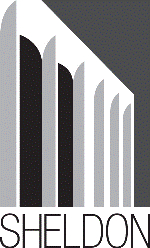Fine and Performing Arts, Hixson-Lied College of

Sheldon Museum of Art: Catalogs and Publications
Date of this Version
1970
Citation
Sheldon Memorial Art Gallery, University of Nebraska- Lincoln
Abstract
Throughout his career, Richard Diebenkorn has employed both abstract and figurative compositional techniques. During the period between the 1963 retrospective exhibition of his figurative paintings at the M. H. de Young Museum in San Francisco and 1965, when he began work on his widely acclaimed and ongoing Ocean Park series, he produced a series of over one hundred figurative etchings, among them, domestic interiors, portraits of his wife, table-top still lifes, nudes, and San Francisco Bay Area landscapes. In 1965, forty-one of these prints were selected by the artist and published by Crown Point Press, Berkeley. Entitled 41 Etchings Drypoints, the edition of twenty-five is comprised of thirteen bound books and twelve portfolios. This selection of representational images, typical subjects of Diebenkorn's painting of this period and highly influential in what became known as Bay Area figuration, is presented in Richard Diebenkorn: The '41 Etchings Drypoints" Portfolio. Drawn from the collection of the Sheldon Memorial Art Gallery, the portfolio was donated to the gallery by Elinor Poindexter.
Printmaking has occupied an important position throughout Diebenkorn's career. A relief from the solitary confinement of the studio, it has provided another rich avenue for his ideas.
A traditional intaglio process (the generic term for recessed printing techniques), drypoint etching lends itself to Diebenkorn's tactile line. In this process an image is cut into the surface of a metal plate with a pointed instrument, such as a fine needle or dental tool. A superb draughtsman, Diebenkorn utilized the physicality of the technique, the varying "weight" of his line reflecting the sensitivity of his touch. Although most of the prints in 41 Etchings Drypoints are simple drypoints or hardground etchings, Diebenkorn also used aquatint, often mixing these techniques to achieve a dramatic linear quality reinforced with rich blacks and controlled tonal areas. The intaglio process allows for revision through the scraping out of incised lines on the printing plate. The trace of these revisions, so essential to Diebenkorns's painting process, is no less important to the final results of his printmaking.


Comments
All images are copyright by the original artists. Publication copyright 1970 The Regents of the University of Nebraska